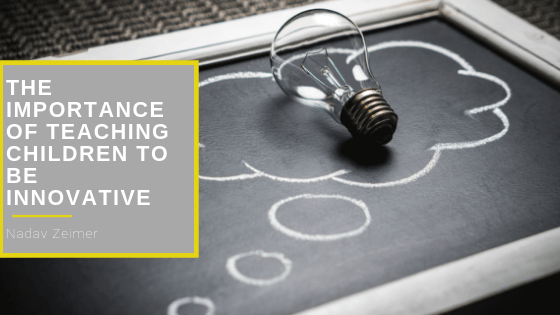By the time a child has reached the age of 12, they’ve learned that it’s more important to get the right answers than it is to ask thoughtful questions. The current education system focuses on teaching kids how to produce correct answers, but not how to find and discover the right answers themselves. For the education system to properly serve children and set them up for success later in life, they need to be taught how to innovate.
In my visits to Japanese schools, I’ve noticed that their system of education is much more strict and regimented, demanding a level of uniformity that American schools would never dream of. At the same time, students are allowed to talk to each other, get up during a lesson and otherwise do whatever they see is needed to allow themselves to learn best. School lunch is served by the students to each other in their classroom, and they are responsible for clean up as well. These self-directed activities and the teacher’s comfort with students taking the initiative without permission are particularly important for learning and especially difficult in a diverse school community given our very human biases including straight up racism. A teacher who is of a different race and culture than their students has trouble reading students across these cultural chasms. This leads to a strict “sit down and shut up” expectation which is detrimental to learning.
A 2014 study showed that children who spend time in more free-flowing and open-ended types of activities had greater self-directive executive functioning skills. These skills help kids to determine their own actions and when they’ll carry them out. When kids are over-instructed, these skills aren’t given a chance to develop. Not having these skills makes children unprepared for living in an ever-changing modern world. Most public school teachers reading this are rolling their eyes at the naive idea that “free-flowing and open-ended” activities could work in their schools. That is exactly the problem, and we have left it to teachers to solve while the entire system that governs their evaluation is a model of precisely what not to do to students.
It’s no longer enough for kids to learn facts that they can regurgitate for a test; children need to learn that they can naturally discover knowledge for themselves, how to ask the right questions and find their own answers. Kids need to be given a chance to show how they are innovative and creative in their own ways. An education model that teaches children to believe in their instincts will help inspire them to learn and give them to tools to keep learning throughout their lives.
Venture capitalist Albert Wenger often mentions how students who he meets in college have never been asked to reflect on their own purpose or passions. Schools avoided these questions because factory work required us to put our interests aside. In today’s economy students must be given time to reflect on these very personal questions and see teachers who are passionate themselves. And that would require an evaluation system that celebrates teachers’ passion and ability to nurture the same in their students.
In their book Make Just One Change, authors Dan Rothstein and Luz Santana share a very structured approach they have put into practice in alternative schools to teach students to ask questions. Once students can develop good questions on a subject, they can then answer their own questions for homework, for example. Students are much more likely to continue thinking about a subject after school hours if the topic is one that they came up with and which they are genuinely interested in understanding. When students have a sense of purpose to their work, they’re more motivated to work on finding answers and solutions.
Incorporating technology into the classroom can help to encourage innovation. We know that students brains are mostly impacted by how their peers view them and technology can provide a semi-public space for students to showcase their thinking and be recognized by their classmates for their contributions. These types of classroom tools also allow students to get feedback on their work and to compare their work to that of their peers. Having samples of other students’ work is a great learning tool in itself.
In Ontario elementary schools, educators have begun adding community makerspaces into the classroom. Makerspaces are creative spaces where students can explore, tinker and discover. These spaces support hands-on learning and are making kids more enthusiastic about school. The students are also behaving better and earning higher grades. Teachers also noticed that different 21st-century skills were being developed in their students using these spaces, skills such as communication, problem-solving and collaboration.
